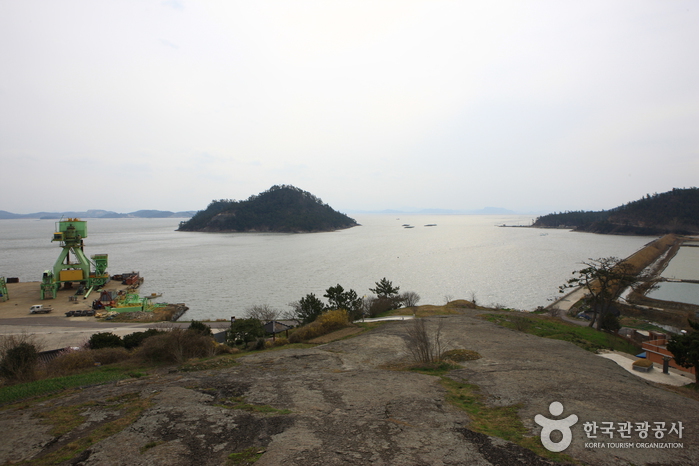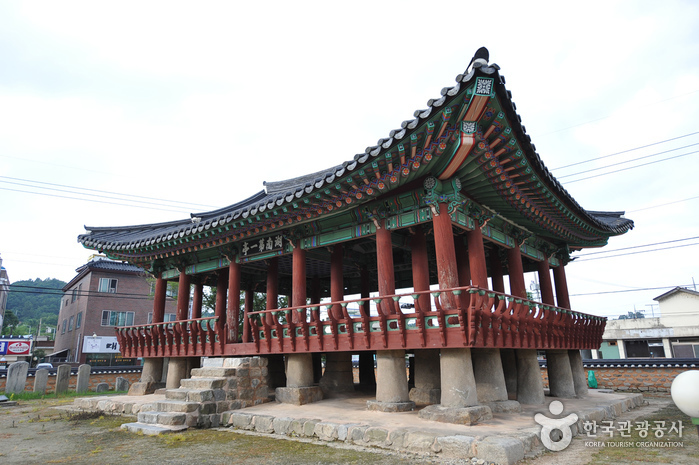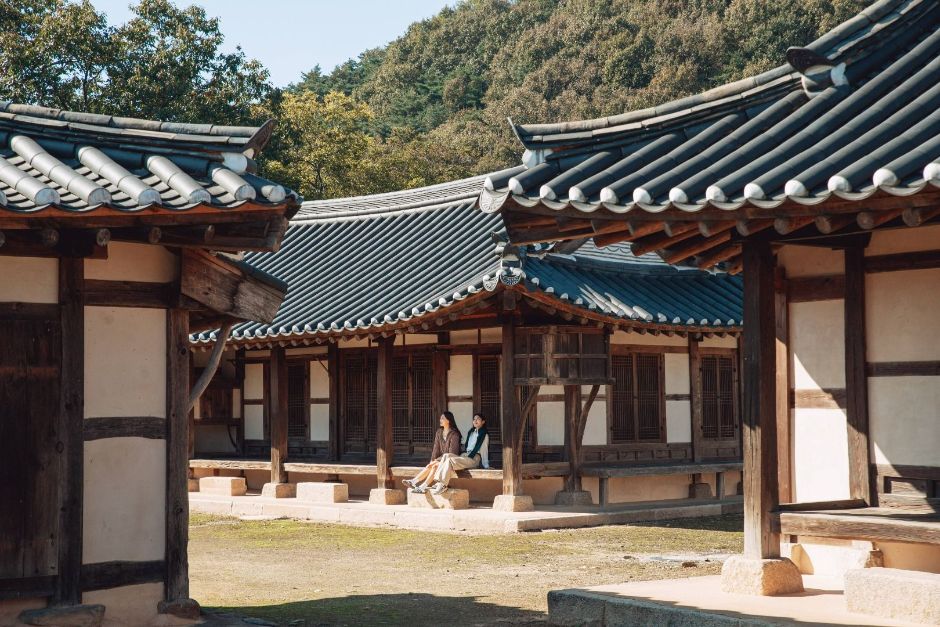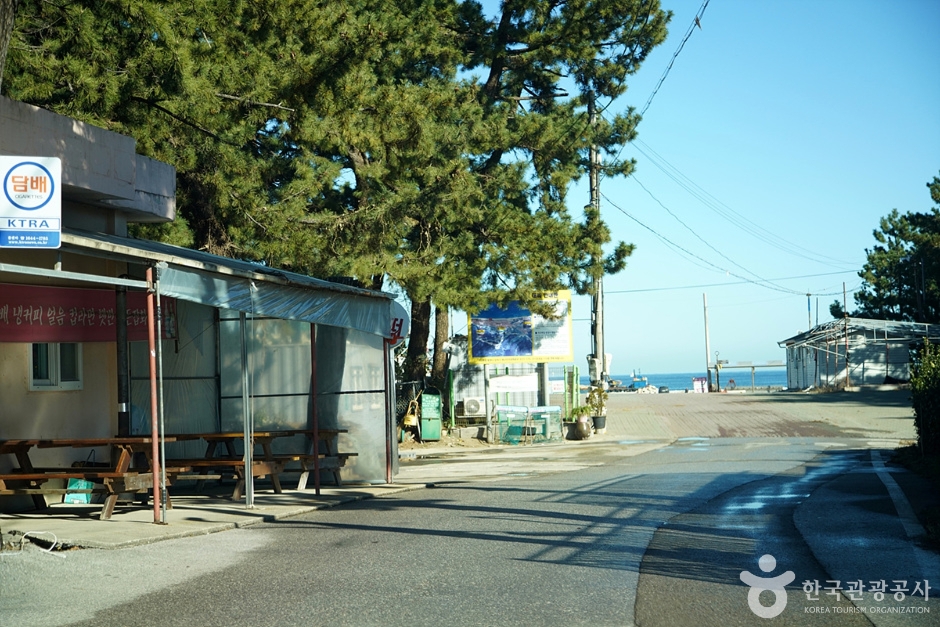Yi Chungmugong's Byeokpajin Battle Monument (이충무공 벽파진 전첩비)
2025-01-20
90 Byeokpa-gil, Gogun-myeon, Jindo-gun, Jeollanam-do
Yi Chungmugong's Byeokpajin Battle Monument, located at Byeokpajeong was built to commemorate the victory of Admiral Yi Sun-sin and honor the souls of martyrs who sacrificed their lives in the battle of Myeongnyang. The epitaph of the monument, penned by Lee Eunsang, features the calligraphy by Son Jae Hyeong. Although just a small fishing port now, Byeokpajin was a crucial port connecting Jindo and Haenam before the Jindo Bridge was built in 1984. It still holds a great historical significance.
Jindo Tower (진도타워)
2025-01-20
112-41 Mangeum-gil, Gunnae-myeon, Jindo-gun, Jeollanam-do
Jindo Tower, located on top of Manggeumsan Mountain near the Jindo Bridge, has become a popular tourist attraction among international visitors and Korean tourists alike. The tower was built in recognition of Jindo residents who aided General Admiral Yi Sun-sin in winning the battle of Myeongnyang Daecheop against the Japanese invasion. The tower has various convenience facilities, including a restaurant and a café, allowing visitors to have a comfortable trip while taking in the beautiful surrounding view.
Naejangsan Maple Ecology Park (내장산 단풍생태공원)
2025-01-17
273-17 Naejanghoban-ro, Jeongeup-si, Jeonbuk-do
Naejangsan Maple Ecology Park is created near Jaejangho Lake in Jeongeup and has diverse kinds of trees, included 11 types of indigenous maple trees. The park comprises diverse maple-themed recreational amenities such as Maple Experience Exhibition Center, various gardens, maple tunnel trails, and more. The best time to enjoy the park is in Novemeber when the fall foliage is at its peak and the park hosts a variety of events and exhibitions.
Pihyangjeong Pavilion (정읍 피향정)
2025-01-17
2951 Taesan-ro, Taein-myeon, Jeongeup-si, Jeonbuk-do
Pihyangjeong Pavilion is known to be the most outstanding pavilion in all of Jeolla region. Orignally, there were two ponds around the pavilion, but one of the ponds were filled up with soil during the Japanese period. The pavilion's name derived from the scent of water lilies that bloomed afloat on the ponds. The pavilion demonstrates all the basic components of a typical pavilion built during the Joseon dynasty and is valued as an historical example of a wooden architecture during the mid-Joseon dynasty.
Kim Myeong-gwan's House (정읍 김명관 고택)
2025-01-16
72-10 Gongdong-gil, Sanoe-myeon, Jeongeup-si, Jeonbuk-do
A typical example of an aristocrat's house, this residence was built in the 8th year of King Jeongjo's reign in the Joseon dynasty by Kim Myeong-gwan, the 6th generation descendent of Kim Dong-su. Kim Myeong-gwan carefully considered the principles of geomancy when choosing the location of the house, with Cheonghasan Mountain to the back and Dongjingang River to the front, and it took ten years to complete the house. Upon entering the main gate, the house reveals a balanced symmetry with the daecheongmaru (wooden floor hall) at the center. Every component of the house was placed and designed to create a balance with the surroundings and efficient movement within the premises. Because the house contains most of its original form and displays a beautiful harmony with the natural surroundings, it is regarded as valuable research material. Although there may be limitations, viewing is generally allowed.
Sangmaengbanghaebyeon Beach (상맹방해변)
2025-01-16
Sangmaengbang-gil, Geundeok-myeon, Samcheok-si, Gangwon-do
Sangmaengbanghaebyeon Beach is located 5 kilometers from downtown Samcheok and connected to Maengbanghaebyeon Beach. With a shallow average depth of 1-2 meters, its crystal clear water and white sand makes it a perfect location for a family vacation. The pine forest stretched across the beach allows visitors to enjoy forest bathing. Various beach events are held here such as clam collecting contest, bare-hand trout catching contest, and more. For those who enjoy sports, there is a golf practice range nearby. In spring, the nearby canola field blooms with flowers, creating a picturesque background for visitors to enjoy.
Haseom Observatory (하섬전망대)
2025-01-16
385-19 Mapo-ri, Byeonsan-myeon, Buan-gun, Jeonbuk-do
Haseom Observatory offers a bird’s-eye view of Haseom Island, which gets its name due to its resemblance to a lotus flower. The observatory is well-known for offering the views of sea parting, Korea’s Miracle of Moses, which occurs on the 1st and 15th of every month in the Lunar Calendar when the sea tides recede, revealing a 2-kilometers-long shoreline. It is famous for its abundance of clams, hence sometimes called “half clams-half mud.” The elevated location of the observatory allows visitors to enjoy the views of the wide sky and beautiful sunsets.
European Village Engelberg (유럽마을 엥겔베르그 )
2025-01-20
503 Chungjeong-ro, Jeongeup-si, Jeonbuk-do
European Village Engelberg is a village-style resort that consists of a senior townhome and a wellness resort. All buildings are built with wood and inspired by European-style architectural design. Derived from a village in Swizterland, the name means "Angel's Mountain," and the European Village Edenberg overall demonstrates a striking resemblance to cities and villages in Switzerland or southern Germany.
Naejangsan Sculpture Park (내장산조각공원)
2025-01-17
214 Naejanghoban-ro, Jeongeup-si, Jeonbuk-do
Naejangsan Sculpture Park is located at the foothills of Naejangsan Mountain below Seorabong peak. The park exhibits a sculpture from 16 recognized artists who were awarded from Korea's four major art exhibitions. The park is also home to endangered and rare plants, allowing visitors to enjoy art in a nature-friendly atmosphere. The Naejangsan Chrysanthemum Festival is held at this park every fall.
Solbaram Bridge (솔바람다리)
2025-01-16
Byeongsan-dong, Gangneung-si, Gangwon-do
Solbaram Bridge, completed in 2010, is a 197-meter-long pedestrian and bike bridge with great views. It was named after the pine trees of Gangneung (sol) and the wind (baram) due to its windy nature. Connecting the river with the sea, the bridge offers beautiful night views and refreshing sea breezes, making it a popular place for dates as well as family vacations. To the north across the bridge, visitors can find the Gangneunghang Port Yacht Marina and the Gangneung Coffee Street.





 English
English
 한국어
한국어 日本語
日本語 中文(简体)
中文(简体) Deutsch
Deutsch Français
Français Español
Español Русский
Русский